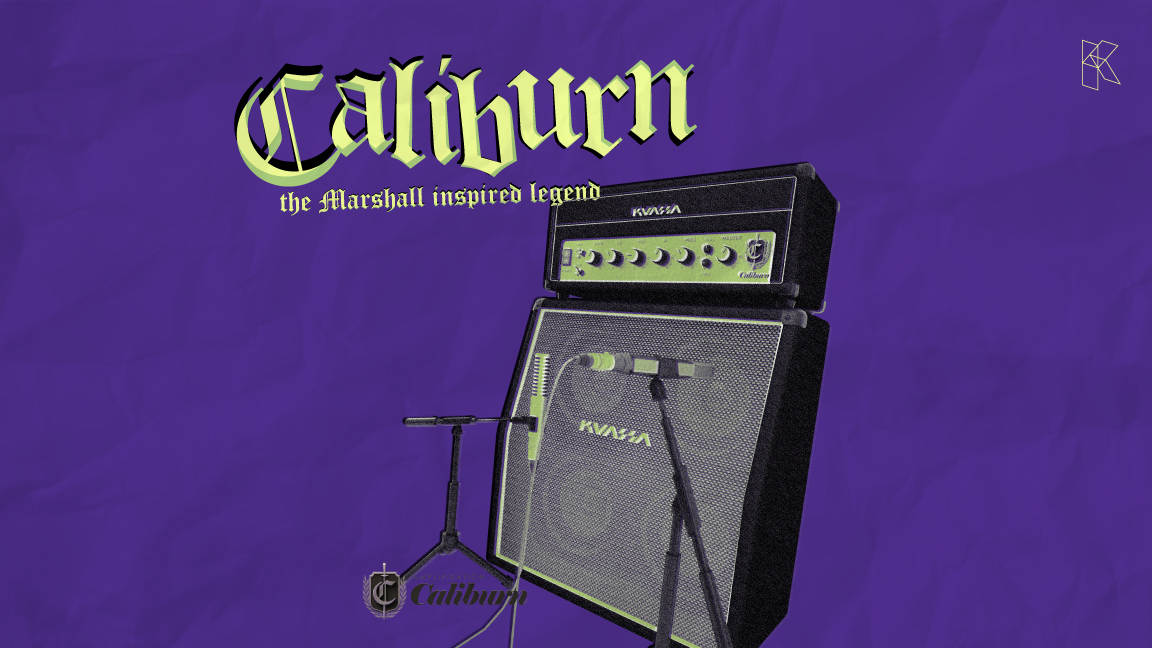How to dial your classic British amp sim for best tone
Modern guitar players should consider themselves as the lucky generation to take possession of these 3 british legends in our digital workstations.
Each of the three models in Amplifikation Caliburn guitar amp simulator are inspired by one of the most iconic British amplifiers ever known.
The Marshall amps could be considered as the inspirational force that pushed the road of rock music in the 60s. Players like JImi Hendrix, Angus Young, and bands such as The Rolling Stones, Jimmy Page in Led Zeppelin utilized the power of that raw and natural mid-range of Marshall amps. The distortion from the cranked power amp tubes through 4×12 cabinets became the new way of expressing musical endeavors.
Amplifikation Caliburn Amp Simulator
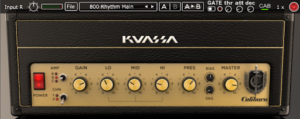
Key Features:
From the manual
- 3 amp types, inspired by Marshall* JTM45, JCM800, and JCM900 Master Volume.
- 2 channels for each amp : Clean and Lead.
- NEW! Power amp Bias and Sag feature.
- NEW! Five types of cabinets with Celestion* speakers: G12T, Vintage 30,
Greenback.
- NEW! Seven types of workhorse mics: Shure* SM57, Sennheiser* MD421,
Sennheiser* MD441, C&T* Naked Eye, Royer* 121, AKG* C414, Neumann* TLM103.
- NEW! High pass and low pass filters.
- Freely adjustable dual-miking configurations with mono/stereo configurations
just like a real-life guitar recording session with a mix option.
- Built-in Noise Gate and Limiter.
- Photorealistic graphics for lifelike guitar playing experience.
- Straightforward and easy to use interface.
- Support up to 8x oversampling.
Lets dial up a few tones for each amp type on the Caliburn Amp Simulator
that could be a good starting point to jam
Caliburn A:
The JTM45 is the very first guitar amplifier made by Marshall. First produced in 1963, it is praised as one of the most desirable guitar amplifiers.
The Amp A in Caliburn is an ideal amp for clean and bluesy guitar tones, but don’t forget the master control. If you want to get an early AC DC tone, push the master level to max and use it with humbucker guitar – preferably an LP.
It’s a “loose” and “compressed” amp with lots of low end and the bass gets more pronounced when the amp gain control is maxed out. To compensate this, here are a few settings examples that are a good starting point. The “LO” control is the key to clean up the signal and make it sounds “Tight”
Clean:
Chn – 1
Gain – 7
Lo – 3
Mid – 3
High – 8
Presence – 7
Master – 5
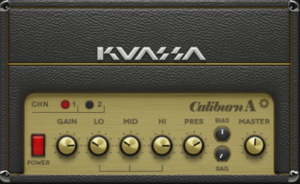
Audio Sample:
https://drive.google.com/file/d/1ZkJQzvGiau53dHZucXVfsLFTLhh_ZiSK/view?usp=sharing
Classic Rock:
Chn – 2
Gain – 7
Lo – 0
Mid – 10
High – 5
Presence – 5
Master – 10
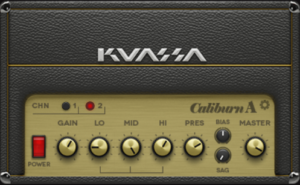
Audio Sample:
https://drive.google.com/file/d/1ZkJQzvGiau53dHZucXVfsLFTLhh_ZiSK/view?usp=sharing
Classic Rock:
Chn – 2
Gain – 7
Lo – 0
Mid – 10
High – 5
Presence – 5
Master – 10
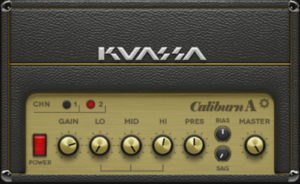
Audio Sample:
https://drive.google.com/file/d/1Wc-946RaZ2RFZ4rVolb7NyBgPl0UAXiY/view?usp=sharing
If you aren’t happy with these settings and your favorite guitar, then the 45 cranked might not be the kind amp for your taste. But I bet you will love it!
Caliburn B
The JCM800 amplifier became the force of 80s hard rock and heavy metal bands.
It was a “hot” amplifier because of the added gain stages. The introduced diode clipping in some revisions, mixed with the tubes in the preamp section made the amp distort earlier.
The guitar players riding the new wave of British hard rock and heavy metal loved this aggressive tone. A good example could be Ozzy Osbourne’s guitar player ,Jake E Lee, who used the amp boosted with the classic Boss SD-1.
To have a good balance and not too shrill tone, always back up the highs a little, then play with the preamp gain level in correlation with the master. Lowering the preamp gain also changes the tone stack behavior. So, if you want a classic crunch with single coils but not so shrill at the same time, you have to push the preamp more, and then set the highs and the presence until you find the sweet spot where the pick attacks is not too ear piercing.
Clean:
Chn – 1
Gain – 8
Lo – 7
Mid – 6
High – 8
Presence – 6
Master – 8
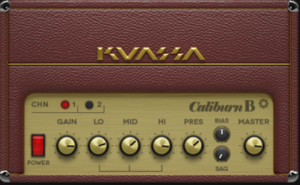
Audio Sample:
https://drive.google.com/file/d/13qjJ7ZXkzLIZqDOxSZSbzNVKDA39uEKK/view?usp=sharing
Hard Rock:
Chn – 2
Gain – 8
Lo – 3
Mid – 6
High – 6
Presence – 6
Master – 8
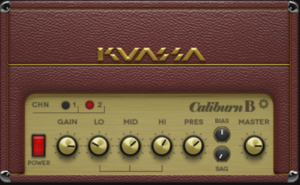
Audio Sample:
https://drive.google.com/file/d/1yq2IAcl9fujtn_kdro28h63oNqDaIYoA/view?usp=sharing
80s Metal:
Chn – 2
Gain – 7
Lo – 6
Mid – 1
High – 6
Presence – 7
Master – 9
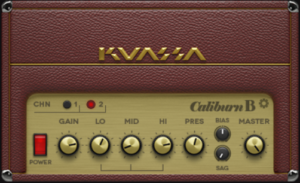
Audio Sample:
https://drive.google.com/file/d/1icCHrkWGB1kVwIvGmIOEUV7rRG1rxOan/view?usp=sharing
Caliburn C
Released in January 1990, the JCM900 delivered higher gain and lower signal to noise ratio combined with the classic Marshall tone. It’s an ideal amp for leads or more modern tones. Ideal amp for instrumental 80’s to 90’s melodic shred. The JCM900 were also utilized by many early death metal bands.
Be careful with the EQ controls! The bass can easily overpowered, the treble can easily get very sharp and ear piercing! Don’t forget to play with the microphone position to get the best tonal response.
90s Metal:
Chn – 2
Gain – 8
Lo – 4
Mid – 1
High – 8
Presence – 7
Master – 5
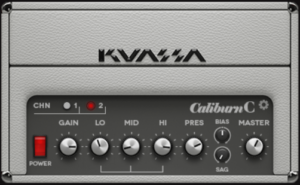
Audio Sample:
https://drive.google.com/file/d/1eaK8YeGEDMNbs0Z19YKvcr_m1J-DPRMx/view?usp=sharing
90s Solo:
Chn – 2
Gain – 7
Lo – 6
Mid – 1
High – 6
Presence – 7
Master – 9
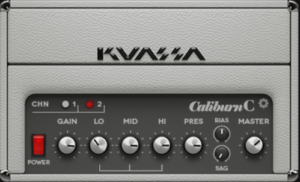
Audio Sample:
https://drive.google.com/file/d/1lHmTwiI8CGjBvq5N8afHhRMQpJO6H_NH/view?usp=sharing
Final words, the Amplifikation Caliburn, British inspired amp simulator is ideal for a lot of music styles. You can easily dial any tone that desires the classic raw and honest british guitar sound. Always keep in mind that the Master is an integral part of the whole amp circuit and signal path. The tone stack could change the distortion behavior from loose and flabby drive to quite tight one. So, experiment with the controls and find your own voice.
Here you can download the presets from the audio samples for Amplifikation 360
https://drive.google.com/file/d/1s8Qkdbhb-zKg3wFGX07LRDTK18HhDP6R/view?usp=sharing
Happy playing and keep rocking!


